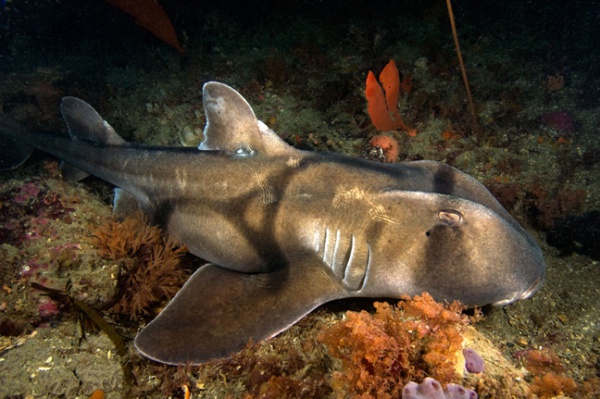Facts About Port Jackson shark
The Port Jackson shark is a captivating nocturnal species native to the coastal waters of southern Australia, particularly around Port Jackson. Easily identifiable by their distinct dark brown, harness-like markings on a grey-brown body, these sharks can reach lengths of up to 1.65 meters. They primarily feed on mollusks, crustaceans, sea urchins, and fish.
One intriguing aspect of Port Jackson sharks is their migratory behavior. They migrate south during the summer and return north in the winter to breed. Typically, they inhabit rocky areas at depths of less than 100 meters.
Port Jackson sharks possess several unique features. Their teeth vary between the front and back, aiding them in handling different types of prey. Their distinctive harness-like markings set them apart from other species. Additionally, they have a specialized respiratory system that allows them to eat and breathe simultaneously by pumping water over their gills.
In terms of reproduction, Port Jackson sharks are oviparous, meaning they lay eggs. Females lay pairs of eggs every 10-14 days, and these eggs require about 10-11 months to hatch. Unfortunately, numerous eggs fall prey to predators.
Their digestive system is notably efficient, comprising a J-shaped stomach for storing and digesting food and a short intestine equipped with a spiral valve to facilitate digestion. As nocturnal hunters, they search for food under the cover of darkness, using caves for protection during daylight hours. Adult Port Jackson sharks often rest in groups within caves, whereas the younger individuals tend to be more solitary.
Fortunately, the species is not endangered and does not pose a significant threat to humans, though they are occasionally caught as bycatch. Scientists study them to gain insights into bottom-dwelling sharks. Their conservation status is classified as "Least Concern" though their eggs are highly susceptible to predation. Predators of Port Jackson sharks include larger sharks such as the white shark and the broadnose sevengill shark. In New Zealand, they are considered "Vagrant" but "Secure Overseas" under the Threat Classification System.
